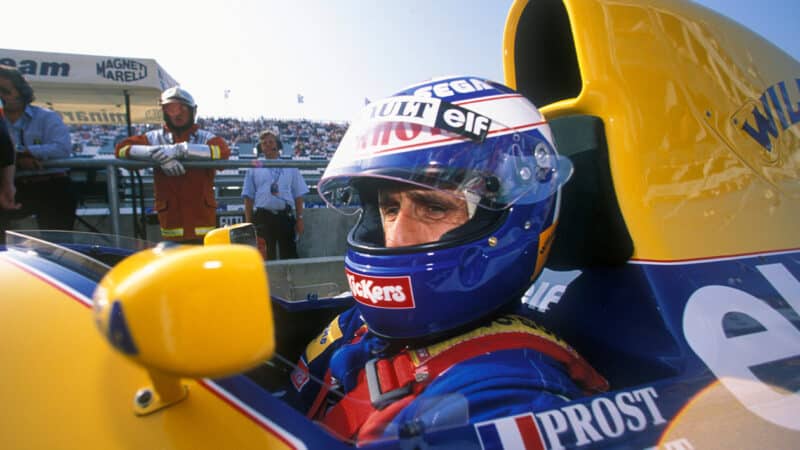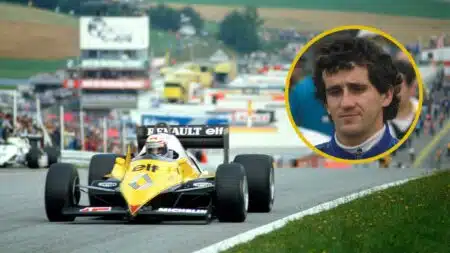“So I always follow, I always work for them – even today I still do things with them.
“It’s a shame. I understand the decision in terms of the financial aspect, especially when you’re running a team based in France. The cost is more than in countries like in England, for example.
“Obviously I’m very sad, because it’s a long history, it looks like they disappear like this, nobody talks about that.
“But if I’m here today, it’s because of them. Because of the history of what they have done in motor sport, in F1 – we are part of the history.”
Renault will maintain a presence in F1 through its Alpine team, but that’s essentially a British team (based in Enstone), which is funded by a French car manufacturer.
It was the Viry-Châtillon engine base in France that was the beating heart of its motor sport operations, and that’s now been redirected to help with supporting the power units going into the Alpine WEC Hypercar.

Prost and Renault were set for ’83 title until late-season falter
Grand Prix Photo
The brand has been renowned for bringing engine technology innovation into F1 being involved almost continuously for over four decades. It introduced the turbo into grand prix racing with its first works effort, driven by Jean-Pierre Jabouille, in 1977, powered Prost to his final F1 title with Williams in 1993 and crucially collaborated with Red Bull for its massively successful blown diffuser cars, starting with the V8 which went into Sebastian Vettel’s championship-winning 2010 RB6.
However, Prost believes that once Renault falls off the F1 engine treadmill, particularly with the new 2026 engines – featuring 50% electric, 50% internal combustion – a successful return in the future will be unlikely.





